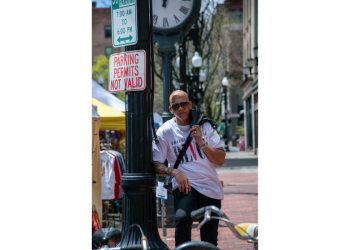But Americans aren’t convinced when it comes to Thomas. And that appears to be reflected in declining overall views of him.
Thomas has generally been a popular justice, and he was even viewed favorably by about a 2-to-1 ratio during an arduous 1991 confirmation fight that featured allegations of sexual harassment from Anita Hill. Marquette University Law School polling showed he remained in positive territory through mid-2021.
But by September of last year, he had taken a turn for the negative. And today, unfavorable views of Thomas (36 percent) outpace favorable ones (25 percent) by double digits.
That 11-point net negative image rating means he falls below Justice Brett M. Kavanaugh — previously the least popular justice — for the first time. And the 18-point decline he’s seen on that measure since 2021 is larger than that of any justice, including Roberts (11-point drop), Amy Coney Barrett (nine-point drop) and the author of the decision overturning Roe, Samuel A. Alito Jr. (nine-point drop). Sonia Sotomayor’s popularity also declined by 11 points, but she remains the most popular justice.
The decline in Thomas’s numbers appears to coincide with key revelations.
It was in March 2022 that we learned Thomas’s wife, Virginia “Ginni” Thomas, had exchanged text messages with Trump White House Chief of Staff Mark Meadows about overturning the 2020 election. While she has long been active in the conservative political movement, Justice Thomas declined to recuse himself from a case in which the court allowed the House Jan. 6 committee to receive White House communications. He was the lone justice to offer a dissent.
A poll the following month showed Americans saying 52 percent to 39 percent that Thomas should recuse himself from cases involving the 2020 election. Even 28 percent of Republicans agreed.
Equally problematic are the latest revelations about Thomas’s relationship with wealthy GOP donor Harlan Crow; we’ve learned that Crow paid for lavish vacations for Thomas (one worth an estimated half-million dollars), for his mother’s house, for his grandnephew’s tuition and for Ginni Thomas’s political group. The revelations began in early April. In Marquette polls bookending them, Thomas has gone from three points underwater to 11 points underwater.
Other polling also suggests that Americans — including a sizable chunk of Republicans — take a dim view of Thomas’s actions. A YouGov poll conducted for the Economist last month showed Americans disapproved of Thomas’s taking the trips and not disclosing them by a more than 2-to-1 margin. Republicans were actually more likely to disapprove than to approve. Americans said they believed that Thomas had broken the law, 43 percent to 28 percent, with 24 percent of Republicans agreeing.
And a new Quinnipiac University poll released Wednesday showed two-thirds of Americans said Congress should investigate Thomas.
None of it means Thomas is suddenly a pariah. But to the extent that Roberts wants to instill confidence in the court again, it’s pretty clear what one of the biggest obstacles might be.
























